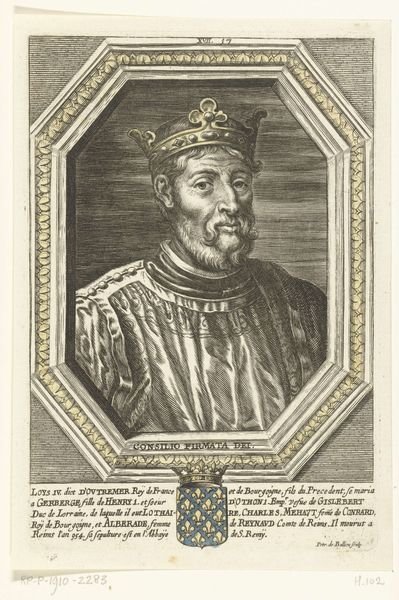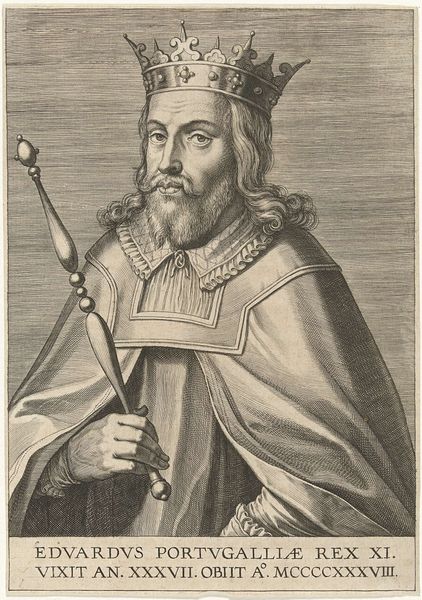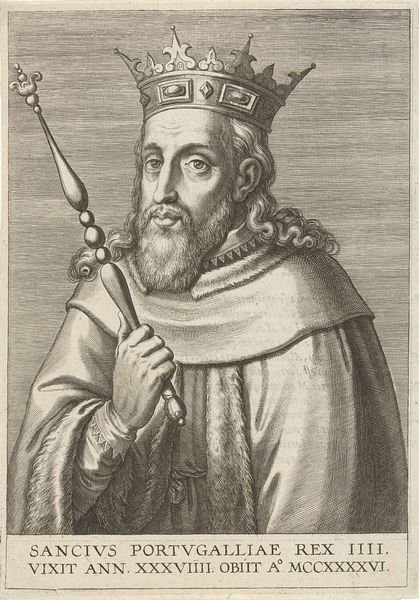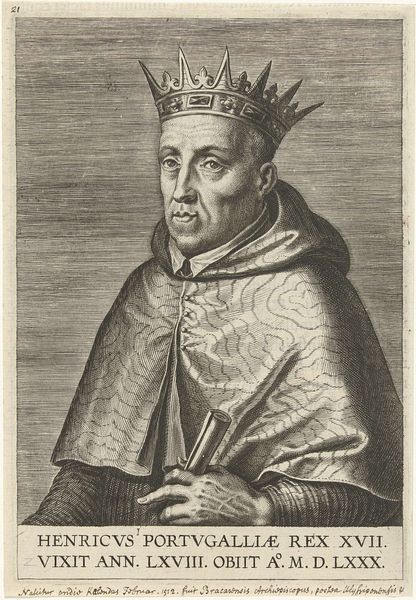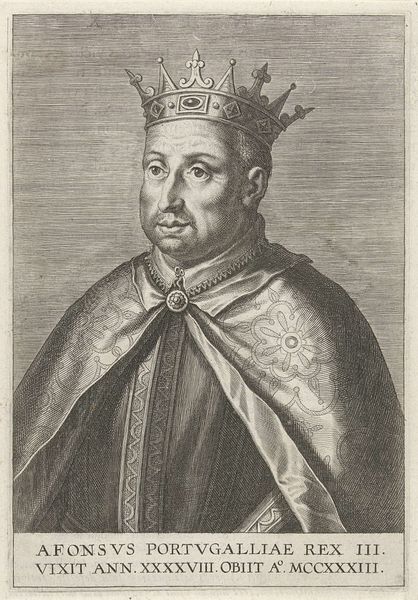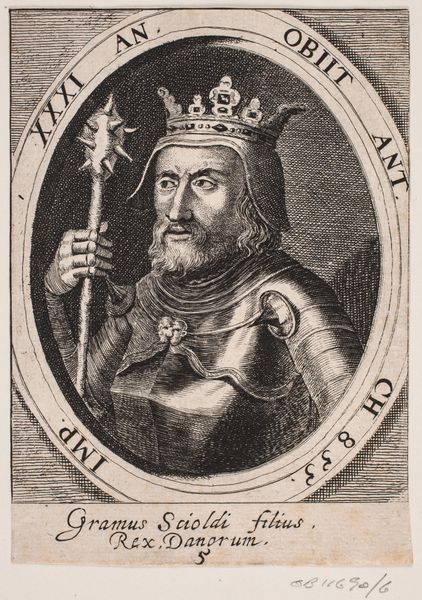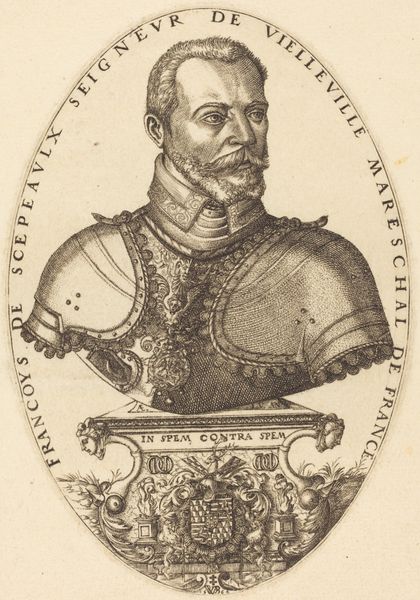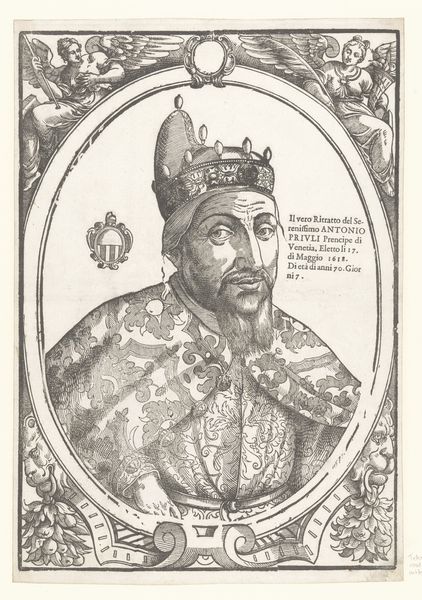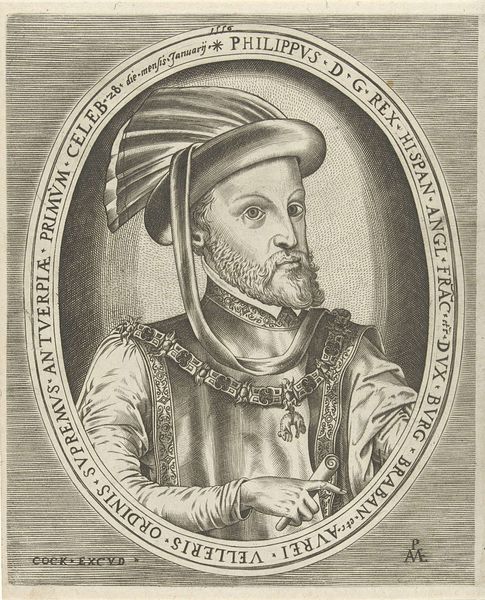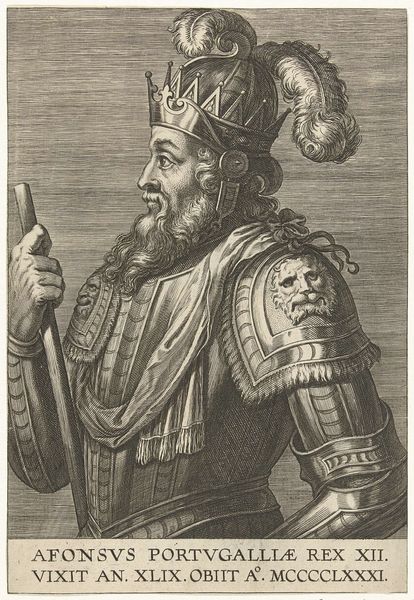
print, engraving
#
portrait
#
baroque
# print
#
history-painting
#
engraving
Dimensions: height 190 mm, width 132 mm
Copyright: Rijks Museum: Open Domain
This engraving by Cornelis Galle I portrays Johan II of Portugal, and is replete with symbols of power and sacrifice. The shield bearing the Portuguese coat of arms shows his earthly authority, whilst the crown reinforces his position as king. However, it is the image of the pelican in piety—piercing its breast to feed its young with its blood—that truly resonates. This potent symbol of self-sacrifice, deeply rooted in Christian iconography, speaks to the ruler’s duty to his people, echoing Christ’s sacrifice for humanity. The pelican is a motif that recurs throughout history, from medieval bestiaries to Renaissance paintings. In each iteration, the pelican embodies themes of redemption and selfless love. The image taps into our collective psyche, evoking feelings of empathy and awe. The emotional power of the pelican as a symbol is undiminished through the centuries. It reveals the cyclical nature of symbols, their ability to evolve and adapt, yet retain their core meaning.
Comments
No comments
Be the first to comment and join the conversation on the ultimate creative platform.
